I tend to give myself personal challenges pretty often, art-related or not. They’re just for myself, so I don’t really share them much, but here is a recent one I’ve got going that seemed like a good one to share. In late September, I was inspired by seeing so many of my artist friends gearing up to do the ink challenges in October, sharing the list of various prompts that some artists were offering as ways to participate. I wanted to do at least one ink sketch per day, but I wasn’t necessarily intending to work with prompts or participate publicly. I just wanted to do this for myself, and give myself some challenges of my own. It was also inspired by 3 pens that were given to me by a friend at the end of September. The pens are Zebra brand brush pens, 3 different sizes. That’s it, just those 3 pens and one very small sketchbook with standard weight paper. I ended up filling this sketchbook with 78 of these small sketches during the month of October.
Here are some of the sketches I did:
Here are the challenges I gave myself in order to expand my visual vocabulary and to work on or improve in some areas of my work habits or to break from aspects of a routine or tendency:
• Do at least one sketch per day
• Work only using those 3 pens without the use of any sort of medium or water to make washes or fill a larger space
• Create compositions from imagination or memory only
• Do not draw human figures or faces in this sketchbook (because I tend to draw figures/faces/characters more frequently than most anything else)
• Use all 3 pens in each sketch, and only those pens
• Draw compositions in different directions/formats (I shared the images here above vertically, but they were all drawn in different directions, usually turning the direction as I worked on most of them)
• Observe and be mindful of my thoughts, tendencies and responses while doing these
Basically, this set of challenges was to establish some limitations for myself in order to push them as far as I could and come up with some things I haven’t drawn or seen before. If you’d like to read a little bit more about the challenges and what I learned, here’s the extended version:
At least one sketch per day
To be clear, I paint, draw, and sketch daily already – this is what I do. So to elaborate a bit on this challenge.. this came from a combination of a simple notion to set limitations in order to push the envelope while overcoming the overwhelm of news and social media combined with the inclination to say I don’t have time to add doing a sketch per day into my busy schedule. Basically, I planned on replacing some aspects of how I found myself spending my time with working in this sketchbook. For example, instead of reaching to look at news on my phone, I’d grab this sketchbook. A big plus was that I ended up sketching more than one sketch per day in this sketchbook alone as well as in other sketchbooks, loose surfaces, and paintings. I have a very busy schedule already, so I kept these sketches quick and loose, and under somewhat of a time constraint, although not being strict about it. I gave myself anywhere from around 5 to 10 minutes, give or take, and at any time of the day. This became a time to either get going in the start of the day or to take a break from other work and paintings I had going, and even other sketches until really eventually, this became a part of everything else too.
Working only with 3 brush pens, no washes
My go-to is to include washes in a lot of the media I use. I do use ink, but usually with a brush, and most often not pens, unless I have water or alcohol accompanying them. When I paint with dry media, a lot of the time I tend to use water and/or alcohol in much of that too. So I was not allowing myself to reach for materials that would be used for watering down any of the ink to spread it around. In the beginning, I found myself really feeling that pull to want to use washes, but I stuck to the challenge and as the days went on and especially as the pens dried out a bit, I had fun playing with filling in larger spaces or creating atmosphere and depth with just the pens. One of the parts of this challenge I felt was really good for me was the simplicity of the higher contrast that I knew these images would have and how I’d discover I might utilize that, as well as how to create a grayscale with a tool that only draws black, using line width variance, distance between strokes, the flow and dryness of ink, etc.
From imagination/memory only
I suppose this isn’t really a stretch for me, but I feel that this is an ongoing challenge I’d like to keep working on. I’ve been wanting to challenge myself to compose my images differently in my paintings, so I was focusing on composing scenes much of the time, small vignettes that hadn’t been seen before or at least that I hadn’t drawn before, and to constantly push what that might mean. They could be environments or details of things, akin to plates under a microscope, birds-eye views of landscapes, or something that might be found in space even, as well as the indication of movement and intangible elements such as emotions and the overlapping of thoughts and memories. And all from imagination. Most of these are based on a mood or feeling – not a word that might describe that mood or feeling, but the actual moods or feelings themselves, and their overlap/complexity/nuance described through imagery. Much of my work and the abstract elements and areas in my paintings are already using this very concept, but the challenge here was also in pushing the envelope when it came to composing that without the figures, mid range values, or atmospheric washes and hopefully all of this would help to expand my visual vocabulary.
No figures or faces
Most of the work I do contains figures, faces, or characters. This year, I’ve been focusing on this a lot and have painted a lot of new work that does not include the figure or a face. (Most of which I have not shared finished images of anywhere yet – but plan to soon!) I’ve still been painting the figurative work too (included in scenes or atmospheres) in other paintings, but these mindscapes I’ve been doing have really been about mood and emotion described in an abstract sense through the use of various marks and textures as well as forms, implied movement and color and/or contrast. I was hoping that this would be an extension of that challenge and would loosen me up even more by having to use these limited tools and other self-prescribed limitations in order to come up with images and compositions. It really did! I have already started on some new ideation and worked on some paintings that were inspired by a few of these little compositions, and I’m really excited about continuing with this. I may incorporate the figure into some of these concepts, but the ones I’ve started so far are without a figure and the abstract forms serve as the focus as the figure usually would in my work.
Use all 3 pens in each sketch
Most often, this was about the use of the obvious variance in size – the larger one gives a broader mark than the smaller one, for example – but sometimes what I found myself doing was to try to make a drawing with all 3 pens but so that it could not be detected that I used all 3 pens. Like trying to make really thin marks in the entire image but with all 3 sized pens. So, those challenges were about line weight by the varying pressure sensitivity, tilt control, and as the pens were getting dry, the varying texture that could be achieved. Other challenges here were varying the direction and types of strokes, layering of values in the overall composition to create depth or texture.
Draw in different directions/formats
All of these drawings started out at different angles or formats (horizontal, vertical, etc) – sometimes starting in the center, sometimes starting from an edge and working in, balancing the darks and lights differently, etc. I did stick to using the right page and not much of the facing page, but some of the drawings did extend across partway onto the facing page. Turning the image isn’t really a stretch for me either as this is something I do a lot with my paintings as well, especially in the beginning stages of a painting, but I wanted to be sure to not just start to draw in the sketchbook vertically each time. The one thing I also did that I find fun was to draw a lot with both hands. So, many of these sketches were drawn with either my left or my right or usually both (though not at the same time). I love what kinds of marks happen from using the opposite hand, and I do also do this a lot when I paint. I felt it was noticeably different in feeling and aesthetic because of the directness and hard-edged quality of the ink pens – and I really liked the result.
Observe and be mindful
This is always something I’m challenging myself in constantly, as I’d like to assume most people do. What I tend to pay attention to are my tendencies and problem-solving, response to and acceptance of new or differing ideas or perspectives, my overall state of mind and sense of engagement, and what sorts of things I tend to gravitate towards in process and in thought. Much of what I’d observe was in hindsight; looking through the sketchbook in the morning and being reminded of those moments, for example. When I look through this now that it’s full, I see stories, emotions, memories, but the images are very abstract. Nothing in this is a clear place or thing. Nothing in this is necessarily impressive to look at, but each sketch is a recording of a moment I spent, and though the moments were not long at all, they were fulfilling. And that was the point, most of all.
Very often, my sketchbooks are a combination of words and images, often times with a quote or many quotes written down on the first page. The quote I wrote in this book is one from Mary Oliver, and I find it to be a great mantra in general:
Overall, the challenges were also to continue to keep my thought process sharp and to not interrupt my day by allowing outside stuff in that tends to overwhelm if I let it permeate my creative time. I’m always giving myself challenges in some way, by using different materials and tools, turning surfaces different ways, and attempting to portray things I observe in a new way. These pens would not normally be a tool I’d choose to flesh out challenges with and it was really helpful in many ways for me to use them for this because they are not what I generally sketch with. I’m still using them and continuing on with this too. It has really gotten me in a good momentum, and so right now, I’m riding that wave. I do recommend this for anyone especially who would like to but thinks they don’t have the time. Like I mentioned before, I do have a very busy schedule, so especially because of the small amount of time I allotted for these, I found the time to do it. And not only did I find the time, I’ve replaced some habits that were not a good use of my time, and I’ve expanded my creative world. I’m inspired by these new thumbnails to make some new paintings, and I’m feeling very motivated overall. This did not cut into my time whatsoever. My point is that doing these actually expanded things rather than detracted from things.
Here are a few more pages from this sketchbook and a glimpse of a painting (WIP, detail) that was inspired by them:
I have a lot more of these mindscape paintings to show, and I’m hoping to share them most likely in my next month’s post here on Muddy Colors. If you’d like to see a few more of those mindscape paintings I’ve been working on over the last several months, you can see some of them in this article I posted here on Muddy Colors a few months ago.


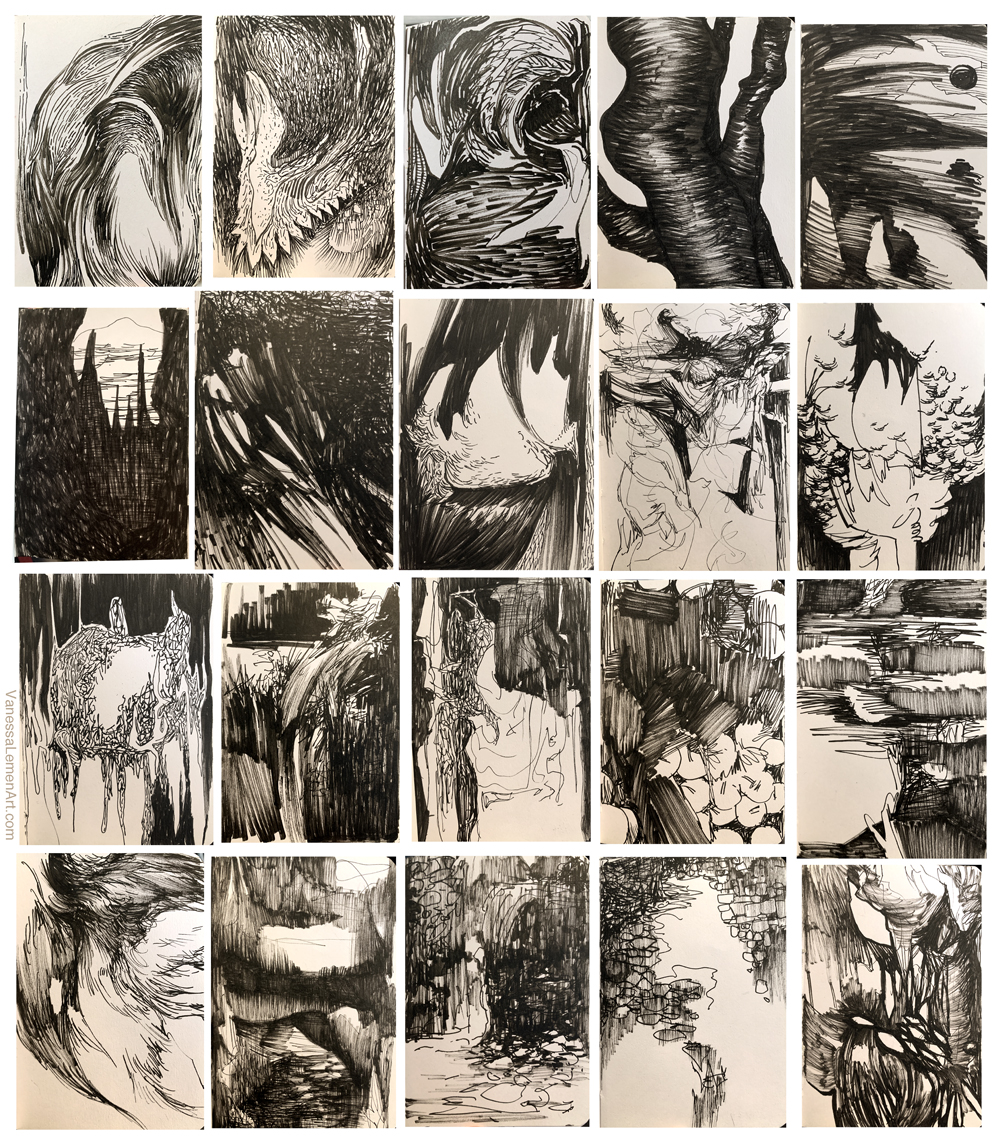

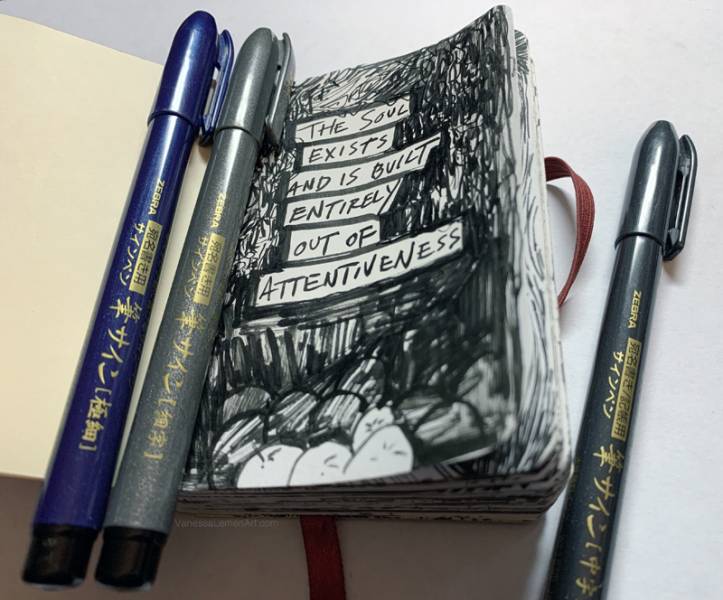

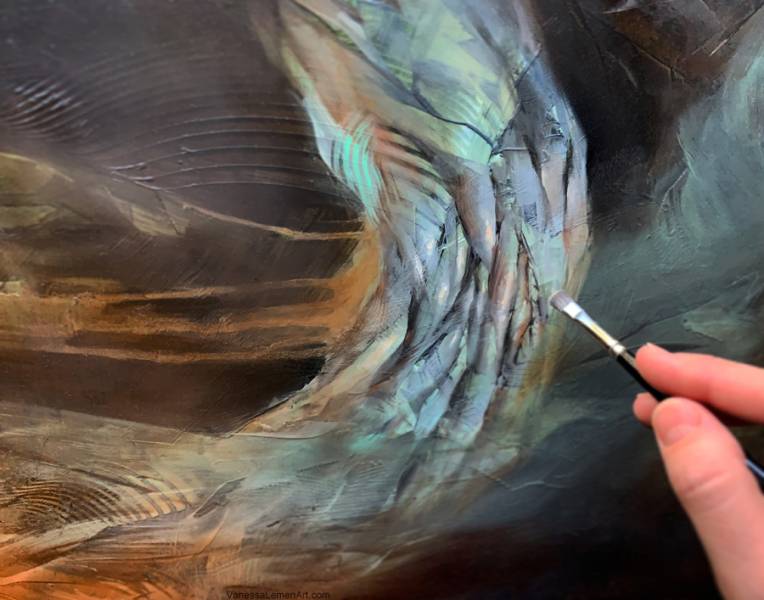
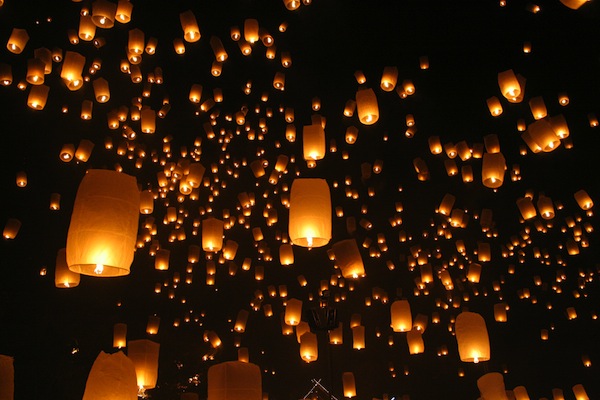
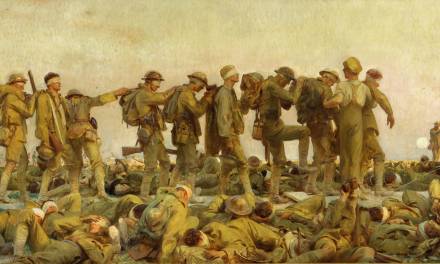

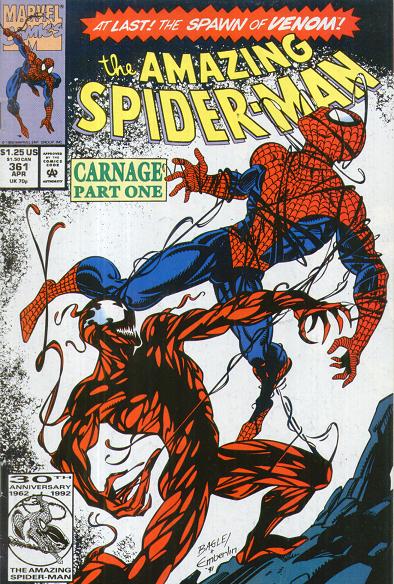

Oh man! So you do know 78 makes a tarot deck???!!!! 😉 This is a great article and you mentioned a few things that have sparked my creativity. I used to try switching hands instead of always using the dominant right side but that was back when I was a kid and drew all the time. I might try it again along with a daily challenge just to see if I can get that love of drawing again.
Hmmmm, thinking thinking thinking!!! 🤔
I’m dying to see that finished WIP!!!!
Ah yes! I totally thought that when I counted and it turned out to be 78 – haha! Thanks for checking out the article and I’m so glad your creativity is sparked! I switch hands because it gives me different randomness and my opposite hand will do things that seem more awkward than my more dominant hand and it gives me a more raw sort of expression. I look forward to seeing what you do with the challenge to yourself! I’m excited for you!! Also, that painting is finished but I decided that it, along with a couple others that I’ve done recently, should have their own space. Plus.. this article got long! haha. I’m excited to share them! Thanks again, Shay! <3
This was an amazing read. I really enjoy how you turned this exploration into a habit as well (trying to reach for the sketchbook instead of the phone).